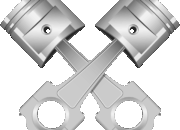The human body, a complex amalgamation of bones, muscles, and connective tissues, serves as a living conduit of motion and vibration. A quintessential question arises: how does the physical interaction between these systems manifest in our day-to-day activities? This inquiry not only encapsulates the essence of human biomechanics but also highlights the intricate laws of physics that govern motion. By examining the principles of dynamics, kinematics, and acoustics, one can glean a deeper understanding of how our bodies function as dynamic systems in a gravitational field.
At the heart of human motion lies the concept of kinematics, which elucidates the trajectories of moving bodies without delving into the forces that propel them. The human body can be modeled as a multi-segmented system with each limb acting as a lever, poised to manipulate objects and navigate through space. In this framework, the joints function as fulcrums, allowing for a diverse range of motions—flexion, extension, and abduction, among others. The study of kinematics observes parameters such as displacement, velocity, and acceleration, offering insights into how these variables change during different poses and movements.
Equally vital to understanding human motion is the exploration of dynamics, which investigates the forces at play during physical activity. Newton’s laws of motion are fundamental in this context. For instance, the first law posits that an object remains at rest or in uniform motion unless acted upon by an external force. This assertion is demonstrative of how inertia affects our ability to change positions or initiate movement. When a dancer pirouettes, they exert a force against the ground; that reaction force facilitates rotation. Herein lies the elegance of biomechanics: every motion is a delicate balance of forces, revealing the profound influence of physics on human activity.
Beyond mechanics, the phenomenon of vibration plays a crucial role in the body’s interaction with its environment. Vibrational energy pervades the spectrum of human activity, resonating not only through the joints and muscles but also through bones and tissues. The vibrations stemming from footfalls during running or the resonations from the vocal cords while speaking are prime examples. Each instance of vibration can be examined through the lens of wave mechanics, with frequency and amplitude dictating the characteristics of the occurring vibrations. Explorations into how certain poses can alter vibrational patterns may challenge traditional understandings of fitness and recovery methodologies.
It begs the question: how can understanding vibrational characteristics enhance athletic performance? Engaging with this inquiry necessitates an analysis of resonance—the tendency of a system to oscillate at greater amplitudes at specific frequencies. For instance, athletes can train to exploit their body’s natural frequencies, enhancing their ability to absorb and disperse energy efficiently. Unconventional training regimens, such as those involving vibration plates, have entered the fitness lexicon. These devices purportedly enhance muscle strength by inducing natural reflexive contractions through controlled vibrations. However, we must interrogate: do these technologies genuinely harness the physics of vibration, or do they merely obfuscate traditional training principles? The challenge continues to remain in discerning efficacy from the hype.
The correlation between human posture and physical resonance cannot be overstated. Ergonomics, a field dedicated to maximizing human efficiency and comfort, provides empirical evidence of how body alignment influences health outcomes. Poor posture, for instance, can lead to alterations in the mechanical axis of the spine, resulting in muscular imbalances and susceptibility to injury. By employing bio-mechanical analysis, one can quantify shifts in posture and their resultant effects on vibrational energy transfer throughout the body. Engaging in practices like Pilates or yoga presents an opportunity to embrace alignment while enhancing core stability—a prime example of applying physics to achieve holistic health and improved performance.
Moreover, the arts of dance and martial arts exemplify the synthesis of physics, motion, and rhythm. Dancers skillfully deploy gravity, momentum, and angular momentum to create fluid sequences of movement. The physics inherent in a ballet pirouette, for instance, is a fundamental interplay of balance, momentum, and centrifugal forces—all meticulously choreographed responses to the laws of nature. Martial artists exemplify similar principles, as they often utilize the concepts of leverage and quick acceleration, allowing for highly efficient techniques that reflect the essence of physical laws.
The excitement of exploring the vibrational qualities of the human body extends into therapeutic realms, particularly in rehabilitation sciences. Understanding how vibration can be employed to modulate pain perception or stimulate tissue healing is an emerging area ripe for investigation. It posits a compelling challenge within the physics of human anatomy: can tailored vibrational therapies advance recovery timelines for skeletal and muscular injuries?
In summation, the exploration of the physics of human motion and vibration elucidates the intricate mechanisms that govern our corporeal existence. It is an interdisciplinary endeavor bridging the realms of biomechanics, physics, physiology, and art. The ramifications of these interactions are profound—shedding light on the significance of posture, the principles of dynamics in athletic prowess, and the potential for innovation in fitness and rehabilitation. As we delve deeper into understanding this multifaceted vista, we invite curiosity and skepticism alike. There remains a vivid landscape awaiting discovery at the confluence of body and physics—an inquiry that beckons researchers, practitioners, and enthusiasts to ponder the delicate dance of matter and motion.










